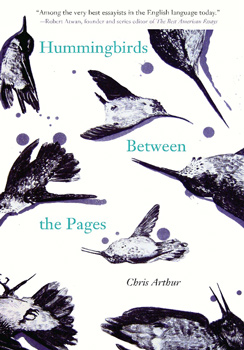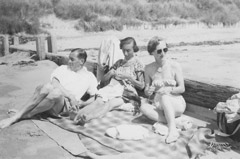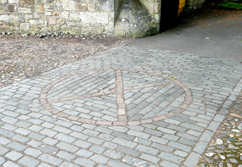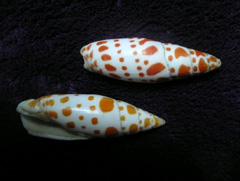Hummingbirds Between the Pages
"Arthur is a gifted observer, and these finely crafted essays will surprise and delight."
Publishers Weekly, July 1 2018
In Hummingbirds Between the Pages Chris Arthur muses on subjects ranging from Charles Darwin’s killing of a South American fox to the carnal music sounding in a statue of the Buddha, from how Egyptian seashells contain echoes of World War II to a child’s first encounter with death. Whether he’s looking at skipping stones, old photographs, butterflies, the resonance of a remembered phrase, or being questioned at an army checkpoint during Northern Ireland’s Troubles, what gives these unorthodox meditations their appeal is the way in which — with striking lyricism — they tap into unexpected seams of meaning and mystery in our everyday terrain. Arthur explores the moments that have left him spellbound, tying his own experiences as a young boy from Ulster who saw his first hummingbirds in London to the wonder felt by early settlers to America who sent pressed hummingbirds across the ocean to the communities they had left behind. Through rumination on the seemingly quotidian, Arthur’s lyrical prose exposes new layers of possibility just beneath the surface of the expected.
This is how the book begins:
The first time I encountered hummingbirds I was eight years old. They entranced me so completely that I still remember them now, vividly, half a century later. It happened in London, not a place usually associated with these little tropical beauties. My visit to the UK’s capital was daunting, verging on the overwhelming. It was the first time I’d been out of Ulster. The density of people, the city’s endless streets of bustling humanity, the perpetual streams of traffic, roads and buildings clogging every view and stretching to the horizon — London blotted out the possibility of fields or forests; it even seemed to shrink the sky. The sheer size of the place came as a shock after the small scale I was used to from growing up in County Antrim.
The hummingbirds punctuated a rare moment of tranquility in that jarring week of rushing between famous sights, jostled everywhere by crowds. We were visiting London Zoo. A door in one of the aviaries led into what seemed like an indoor garden — a glasshouse planted out with exotic ferns and flowers. It was hot enough to suggest a jungle. At first it was just the temperature, humidity, and lushness of the vegetation that struck me. I was expecting more cages and when I saw none wondered if we’d inadvertently strayed out of the animal part of the zoo into some purely botanical display. Then, with a whispered whir of brilliant wings, a hummingbird flew so close to me it made me start. Soon another followed it and, to my delighted amazement, I realized we were in an area in which lots of hummingbirds were flying free. They hovered at nectar feeders and then shot away again, only to flit back moments later. By incredible good fortune we’d coincided with a quiet time. Despite the crowds of visitors thronging the zoo, it was only me, my brother, and our parents in that enchanted green oasis — the four of us alone with scores of iridescent hummingbirds. The place felt like a sanctum veined with streaks of resplendent flight that fractured our accustomed measures of motion and color, suggesting a radically redrawn scale. It went so far beyond what we were used to that it shimmered with the promise of numinous impossibilities.
After witnessing the constraints of creatures held in dismally cramped imprisonment, the freedom of this place was magical. The hummingbirds could fly all around us — into us, if they so desired — there were no barriers between people and birds. They were enclosed, of course — but their tinyness, the space afforded by the glasshouse, and the fact that we were free to walk among them without constraint, to be in their cage-that-didn’t-seem-a-cage, right beside them, gave an air of immediacy that was breathtaking.
I’ve always been interested in birds. But at eight years old my avian reference range was modest and parochial, defined by robins, sparrows, starlings, thrushes, blackbirds — Ireland’s common species that we saw often in our suburban garden. To be suddenly surrounded by these exquisite rarities, to be close enough to observe in detail the astonishing grace and energy implicit in their every movement, to see the fantastic richness of their plumage, was a kind of epiphany. I was spellbound. I stood stock still and let their unexpected presence claim me. Not surprisingly, that moment pressed its weight of passing on my mind with sufficient force to forge a lasting memory. In fact, what I remember most from that first visit to London isn’t Madame Tussaud’s Waxworks, or the Changing of the Guard at Buckingham Palace, or Big Ben and the Houses of Parliament, or the Crown Jewels, or any of the other famous sights, but being surrounded — and left awed — by hummingbirds.
Years later, I happened to be reading Annie Dillard’s An American Childhood and was profoundly struck by the passage that I’ve used as the epigraph for this book:
On the Pennsylvanian frontier in the eighteenth century, people pressed humming birds as if they were poppies, between the pages of heavy books, and mailed them back to Ulster and Scotland as curiosities.
In part, of course, it was simply Dillard’s mention of “Ulster” that gave this passage the impact that it had for me. As someone born and brought up there, I know that Ulster is often seen by outsiders as dour and hard; a cheerless place lacking in warmth, or vibrancy, or color. I’d not endorse that stereotype, but at the same time I can well imagine how a hummingbird might strike an emigrant; why they’d want to send home tangible proof of the new world that they’d come to and the marvels it contained. The stunning iridescence of these birds, their rich arrays of sumptuous color, their unlikely littleness, the intricate perfection of their flight — it’s easy to see how those who’d grown up with sparrows might take them as splinters of a miracle; fragments of another world irrupting into this one — tokens of something wonderful.
Pressing Hummingbirds struck me as at once grotesque and entirely understandable. I readily sympathized with those Pennsylvanian settlers. Newly arrived in a foreign place and encountering things they’d never dreamt of, what could be more natural than wanting to send irrefutable evidence of their revelations to those who might disbelieve them? And of course Dillard’s vignette immediately called back to mind my first visit to London. I knew that my eight-year-old self would have seized any opportunity to take away some memento of those treasured moments in a glasshouse filled with such astonishing bounty.
Unexpectedly, it was hummingbirds I turned to when it came to finding a title for this book and explaining at the outset what it’s about. Neither of these tasks are ones I welcome. My interest is in writing the pieces that follow. Deciding on a title for them and saying something about their nature seems entirely secondary to that. But I understand the need to provide some initial orientation so that prospective readers can decide whether or not to continue. Essentially, the pages that follow are about hummingbirds — not the literal feathered morsels that can be pressed like flowers in heavy books, but their metaphorical equivalents. These may not be iridescent, or chromatically sublime, they may not move with the graceful perfection of real hummingbirds, but all of them have stopped me in my tracks, glinting with the suggestion of meanings beyond the commonplace; they’ve left me as spellbound and wondering before them as my eight-year-old self was before those little feathered gems.
Some of my metaphorical hummingbirds are far too heavy ever to take flight — a railway crosstie, for example, or a bronze statuette of the Buddha; some are abstract and invisible — time, death, and memory; some hide in unlikely objects — seashells, an ugly clock, old photographs; some are disguised as other birds — woodpigeons or blue tits, for example, or as other creatures altogether — butterflies and foxes. But all of them are hummingbird-like in the way they offer unexpected challenges to the mundane scales by which we measure things; they suggest new calibrations in terms of meaning, connection and significance as surely as the London hummingbirds suggested a different scale for color. Like pressing hummingbirds, what I’ve written tries to catch and preserve and (via publication) mail far beyond Ulster some of the things that have flown through my days and left me feeling that I’m standing on the frontier of the ordinary being given glimpses of the extraordinary dimensions it contains. It’s as if doors have been opened into a secret, unexpected glasshouse hidden in plain sight whose denizens mock our usual categories and confinements.
Reviews
“Over the last several decades, Chris Arthur has built up a considerable reputation as an Irish essayist ... He is unusual in focusing his creative effort almost entirely on the literary essay. Most essayists practice at least one other genre; George Orwell is a novelist-essayist, TS Eliot a poet-essayist, and so on. Despite Montaigne’s example, few later writers have been only essayists…The importance of Arthur’s achievement may be missed because of the relatively low status accorded to the essay in the academic and literary worlds. There are a few signs of change in academia (a conference on the essay sponsored by the University of Dundee in June 2018) and publishing (for example Notting Hill Editions, which ‘offers a home for the essay’ as well as an annual prize). But there are few other prizes awarded to practitioners of the genre, and none comparable to the Man Booker and other fiction prizes. Can a writer who is ‘only an essayist’ get the recognition he deserves for an oeuvre that could only have been created in the essay form?”
Graham Good, “Talismans”, in the Dublin Review of Books, November 1s 2018
“Chris Arthur contends that the essay is an outsider art form. A deliberate subversion of the more commercially-popular memoir, the traditional essay deep-dives into apparently quotidian details of our lives and ‘pulls into the light of attention commonplace things that are generally consigned to the dusk of being scarcely noticed.’ Arthur is charmingly self-deprecating in the introduction to his latest collection and downplays each essay as ‘only’ a personal exercise in sharing interesting tidbits with his readers. However, it quickly becomes apparent that this collection has larger ambitions: What’s beneath the surface is profound — metamorphic, even ... Existential themes recur throughout Hummingbirds Between the Pages but, rather than devolving into redundancy, each essay pushes deeper into the unfathomable ... His writing is lyrical, his tone self-assured; the result is that the essays challenge the reader to interpret life more mindfully rather than come unglued by its uncertainties.”
Lisa Grgas, The Literary Review
“What is it like to feel oneself alive in the world — now, in this moment — before being tipped forever into the vast oblivion of eternity? This is the question essayist Chris Arthur is interested in: Mortal time and its constraints — whether experienced in reality, as fleeting moments of sensation and experience and understanding, or on the page, as pieces of writing that are themselves attempts to hold back time and make permanent the dancing transience of thought… Hummingbirds Between the Pages, his latest collection of reflections, projections, autobiography and rivetingly precise observations about the natural world, human behaviour and the touch and sight and smell of lived life [is] a thinking out loud around the big mysteries of life… in a literary form he has made his own.”
Kirsty Gunn, “Time Taking Flight: the Art of Essays” (PDF), Northwords Now, Issue 37 (Spring 2019), p.27
“In Chris Arthur’s masterful, elegant essay collection Hummingbirds Between the Pages, meditations on time, language, nature, mortality, and Northern Ireland capture wonder in the everyday. Taking its title from a habit of settlers, who would mail the bodies of hummingbirds home as a proof of their existence, these essays present individual topics as mementos ... Each page reveals an attentive narrative spirit that raises profound questions on existence ... Through singular phrasing and meticulous descriptions, these essays return again and again to the unlikely miracle of being alive.”
Karen Rigby, Foreword Reviews
“Throughout, Arthur displays his gift for taking the humblest of objects in hand or most ephemeral of thought-strands in mind and mining invaluable meaning from a shaft as deep as the imagination. His authorial voice grounds the work in a gentle but unflinching tenor, offering lessons both heartbreaking and life-affirming with the same patient methodology. With time as his muse, Arthur traverses ground riddled with corpses and blooms and celebrates the lessons both provide with the same intellectual fervor…I found comfort in Arthur’s lyrical use of the English language in its fullness to explore the biggest ideas we know. To borrow from Paul Gauguin: “D’où venons-nous / Que sommes-nous / Où allons-nous” (Where do we come from / What are we / Where are we going)? For those who have wished that Fred Rogers could have remained our counselor, but as adults rather than children, Chris Arthur is the very best alternative for which we might hope, and for this editor, that makes Hummingbirds Between the Pages essential reading.”
Rob Vollmar, World Literature Today, September 2018
“Together these essays take on a near-cosmic view of how we got here and where we are going. It's a stunning collection that reveals a depth and nimbleness of thinking that is a joy to read.”
Amy Brady, Shelf Awareness
“Robert Atwan, who founded the renowned Best American Essays annual anthology in 1986 and has been its series editor ever since, ranks Chris Arthur as ‘among the very best essayists in the English language today’ ... When Atwan helped Joyce Carol Oates pick the ten best American essays since the Second World War (Baldwin, Mailer, Didion, Foster Wallace, Sontag et al) he said he made the task a lot easier by excluding non-Americans ‘so that such outstanding English-language essayists as Chris Arthur ... are missing’ ... In an age of empty popularism, when secularism has already squeezed out the reflective sermon and the Internet already bleached out so much long-form journalism, we need the contrariety, individuality, confidence and connectivity of the well-written essay more than ever.”
David Robinson, Books from Scotland
“There is something for everyone in Chris Arthur’s Hummingbirds Between the Pages. His work will appeal to dreamers and the worldly-wise, fans of the poetic and admirers of the lyrical. This collection will take you on several intricately crafted journeys. Why not let it?”
Calum MacGillivray, Dundee University Review of the Arts
For an assessment of Hummingbirds Between the Pages in French, see Études Irlandaises, Vol. 44 no.1, (2019), pp. 155-157.
Marion Naugrette-Fournier’s review is available here
“Hummingbirds Between the Pages is a deeply philosophical, literary self-aware, and intellectually nuanced collection that shows the both the keenness of Arthur’s perception and the full range of his lifelong capacity for wonder. It is his gift to not only move gracefully between the concrete and abstract, but to draw along with him the reader from the apparently commonplace to the extraordinary. As with previous collections, ruminations on the natural world or on innocuous objects or events are seamlessly interspersed with personal and cultural meditations to produce profound ontological and epistemological reflections. Each of these essays asks questions that trouble us all: how do we live in peace with each other; what is friendship; how do we understand and cope with death; what are things made of; what does it mean to have temporal being? Underpinning the essays are considerations of the ordinary language on which common understanding rests, the symbols and metaphors that guide the way towards abstract knowledge, and the potentialities and limitations of the essay form itself…. Each one of the seventeen essays in the collection centres on an object or idea that is rich with philosophical, cultural, aesthetic, personal and political significance far beyond their surface appearances suggest… the lyricism is intense, the imagery potent and evocative; Arthur has a poet’s sensibility and sensuousness. Arthur is a student of the ineffable. He is always learning from experience, and that experience further deepens the mysteries and widens the viewpoint. This learning can be found through any object or event, if one only stops to observe and, perhaps more importantly, to observe the way one is observing.”
Eoghan Smith, Irish Studies Review, Vol.28 no.1 (2020), pp.149-151
“A book of essays is like an art exhibition; there may be a consistent style, but each picture is different, and every visitor will have their favorites. One of my own starts with an old family photo, moves on to an aunt’s seashell collection, then to post-war horror films and concludes with seeing, on his first visit to London, a film showing waiters at the famous Kenyan hotel ‘Treetops.’ Chris Arthur quotes Orhan Pamuk’s curator [in The Museum of Innocence] who becomes ‘like a shaman who can see the soul of things’ and ‘feel their stories flickering;’ if we could really do that ‘that flicker would quickly change to flame and furnace as story links to story in a conflagration that’s beyond the grasp of any narrative’ (175).
Crispin Paine, Material Religion: The Journal of Objects, Art and Belief, Vol.16 no.1 (2020), pp.125-126
Hummingbirds Between the Pages can be bought from:
"The problem with ideas is that you can’t decide to have them … Whatever its narrative shape, an essay must have an idea at its beating heart. And ideas come to you on their own terms. Searching for an idea is like resolving to have a dream."
Ariel Levy

Contents
- Introduction
- Darwin’s Fox
- How Many Words Do You Need to Describe a Woodpigeon?
- The Walking Buddha Beckons
- Sleepers
- How’s the Enemy?
- Glass
- (Un)sentimental Timekeeping
- Before I Knocked
- Butterfly Smoke Signals
- Watchwords
- Death and the Maiden
- Crux
- Shells
- The Archaeology of Days
- Putting Two and Two Together
- Skimming
- Hitting the Right Note
- Afterword: Thirty-Six Ways of Looking at an Essay

"And Flesh Let Enter", takes a postcard sent from Los Angeles to Belfast in 1931 and two black & white photographs as key points of reference. The essay explores some of their unexpected interconnections. One of the photographs is reproduced above. Arthur says this about it: "When the realization of its true nature hit me I knew I'd have to try to explain in words the vistas that lie behind what's pictured. The difficulty of so doing is daunting and made it seem as if what I had to deal with wasn't just open to plain view, but was rather something tight-closed, even locked and armored, more like a Brazil nut than a photograph."

This encircled "X" is marked on cobblestones near the ruined cathedral in St Andrews, Scotland's ancient ecclesiastical capital. It commemorates the martyrdom of Walter Mylne, who was burnt at the stake at this spot on April 28th 1558. "Crux" considers some aspects of his life and the links between the moment of his execution and the present.

"Shells" follows some of the labyrinths of history that can be traced out of a collection of shells, particularly these two mitra episcopalis shells, collected in Egypt by the author's aunt during the course of World War II.

"Putting Two and Two Together" considers the links and discontinuities between two moments in time as they passed, fifty years apart, at this County Down farmhouse.